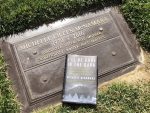Police departments have introduced momentous technological improvements in the last few decades to catch criminals. Forensics experts have made great strides to more effectively preserve and analyze evidence at crime scenes, but authorities are always looking to develop their strategies. Recently, investigators have begun using a form of technology to find perpetrators that are already available to the general public: DNA sites.
DNA sites have sprung up all over the Internet in recent years and have accompanied a wave of interest in amateur genealogy research. Users can upload their genetic information onto these sites to find distant relatives and discover pertinent familial information, such as if one has a genetic marker for a medical condition.
Users find that these sites are incredibly useful, and police departments have capitalized on the advantages of DNA databases as well. Authorities have cracked huge cases thanks to this data, such as the Golden State Killer case that perplexed California law enforcement for 40 years.
In April, California authorities announced that they caught the Golden State Killer through a genetic match who willingly submitted their genetic information to a genealogy site. The suspect, 72-year-old Joseph James DeAngelo, is a former police officer who worked in the town of Exeter from 1973 to 1976.
He later worked as an officer outside Sacramento but was fired in 1979 after shoplifting dog repellant and a hammer. DeAngelo has been linked to at least 100 burglaries, 50 rapes and a dozen murders which transpired between 1976 and 1986.
DeAngelo’s crime spree spanned multiple counties in California and investigators eventually put two and two together to determine that one man was culpable for these crimes. The Golden State Killer, whose crimes ranged from breaking and entering to vicious homicide, has been known throughout the years as the Visalia Ransacker, East Area Rapist and Original Night Stalker.
The notorious criminal’s identity eluded California authorities for years, but DeAngelo could no longer escape his fate when investigators ended up hot on his trail. Police used GEDmatch, a Florida-based DNA site, to generate a fake account and upload DNA evidence gathered from a 1980s-era crime scene. From there, the site connected investigators to DeAngelo’s relatives.
After analyzing DeAngelo’s family tree, police began trailing the suspect and gathered a discarded DNA sample, which confirmed the Golden State Killer’s identity after four decades of dead ends.
Police have also used this tactic to solve the murders of Jay Cook and Tanya Van Cuylenborg, a young Canadian couple murdered in Seattle in 1987. The department which nabbed the suspect, 55-year-old William Earl Talbott II, worked closely with a genealogist to build a family tree with the information derived from the site.
The genealogist traced the DNA back to the individual’s great-grandparents and determined Talbott to be a potential suspect. They, like the authorities in DeAngelo’s case, surveilled Talbott and found a DNA match on a discarded sample.
Since police are now finding criminals who escaped prosecution for decades through readily-available websites, many people have championed the use of these DNA sites to conduct investigations. Others, however, are a little more apprehensive about how freely law enforcement can access these sites and what their investigations mean for citizens’ privacy.
Legally speaking, police are allowed to use these databases for investigative purposes. The information in these databases is publicly available and police in multiple states are explicitly authorized to utilize this information.
After all, if any layperson can use DNA sites to discover information they’re looking for, officers could uncover much more serious truths in the same fashion. Law professor Erin Murphy said, “It seems crazy to say a police officer investigating a very serious crime can’t do something your cousin can do on a Tuesday.”
However, for all parties involved, privacy is of grave concern. Free sites like GEDmatch don’t have the same strict policies in place that larger DNA sites may have, which is most likely why that particular site was used to find DeAngelo. Ancestry.com, for example, requires law enforcement to follow legal processes to procure information from their site.
GEDmatch does specify in their site policy that information obtained from the site may be used for other purposes, but the company’s co-founder, Curtis Rogers, indicated that nobody in the company had been informed of the department’s use of their site in the Golden State Killer case prior to DeAngelo’s capture. The lack of knowledge raises concerns for Rogers and has encouraged him, among others, to consider the state of privacy in this day and age.
The upside of sites like these, of course, is that police can track down criminals that have stumped them for decades, but other situations are cause for concern and may prevent some people from seeing the benefits of the use of DNA sites in murder cases.
There are plenty of valid reasons why someone wouldn’t want to be found or have their privacy invaded that have nothing to do with hiding from the law. Going down the genealogy rabbit hole may not be ideal for people who have anonymously donated sperm, for example. If police obtain DNA from a potential suspect and trace their ancestry back to the donor, their privacy may be compromised.
Additionally, finding criminals through this method exposes the criminal’s entire family, which poses a risk for them. At best, relatives may just be embarrassed about having a criminal in their family and wouldn’t want the general public to know. At worst, however, angry individuals could target a criminal’s family members and put them in harm’s way.
While plenty of database users would be pleased to help the police track down a homicidal relative, some family members of criminals may feel guilty for exposing their relatives. The responsibility of knowing you were the reason for putting someone behind bars might simply be too much to bear for some people.
People of color may also be disproportionately targeted by these investigations. According to NBC News, POC are overrepresented in these databases and could be unfairly harassed by law enforcement.
There is also a strong possibility of misidentifying suspects in criminal cases based on DNA information. In 2014 in Idaho, investigators used a similar website to find the killer of Angie Dodge, a 19-year-old who was murdered in her Idaho Falls apartment nearly two decades ago. Authorities zeroed in on a man named Michael Usry Jr. based on DNA obtained at the crime scene.
Usry Jr. was eventually cleared due to a more stringent analysis of DNA samples, but the damage was already done. The New Orleans filmmaker was thrown through a loop and became traumatized from his experience.
Such an outcome is likely in any case being investigated, but using DNA databases adds a new facet of confusion to these situations. Though DNA analyses can provide great insight into criminal cases, results from these sites may put unnecessary scrutiny on innocent people.
Police use of these databases could deter citizens from finding out about their ancestry. Prior to these arrests, most users might not have thought about what their information could be used for other than genealogy.
Now that it is well known that authorities are using this data for unintended purposes, some people, who would otherwise be enthralled to discover their ancestry, might feel wary about finding long-lost relatives and discovering new information.
Despite the seriousness of the crimes committed by the criminals who have been caught, there are still citizens who feel as if the police were unjustified in using DNA sites to solve onerous cases. While getting violent criminals off the streets is a huge benefit, privacy for non-criminal family members is still of concern.
Personally, I consider the benefits to outweigh the potential downfalls, but both sides need to be heard. Either way, the door to this new investigative tool has been opened and the responsibility of having broader ethical conversations has now fallen into citizens’ hands.















